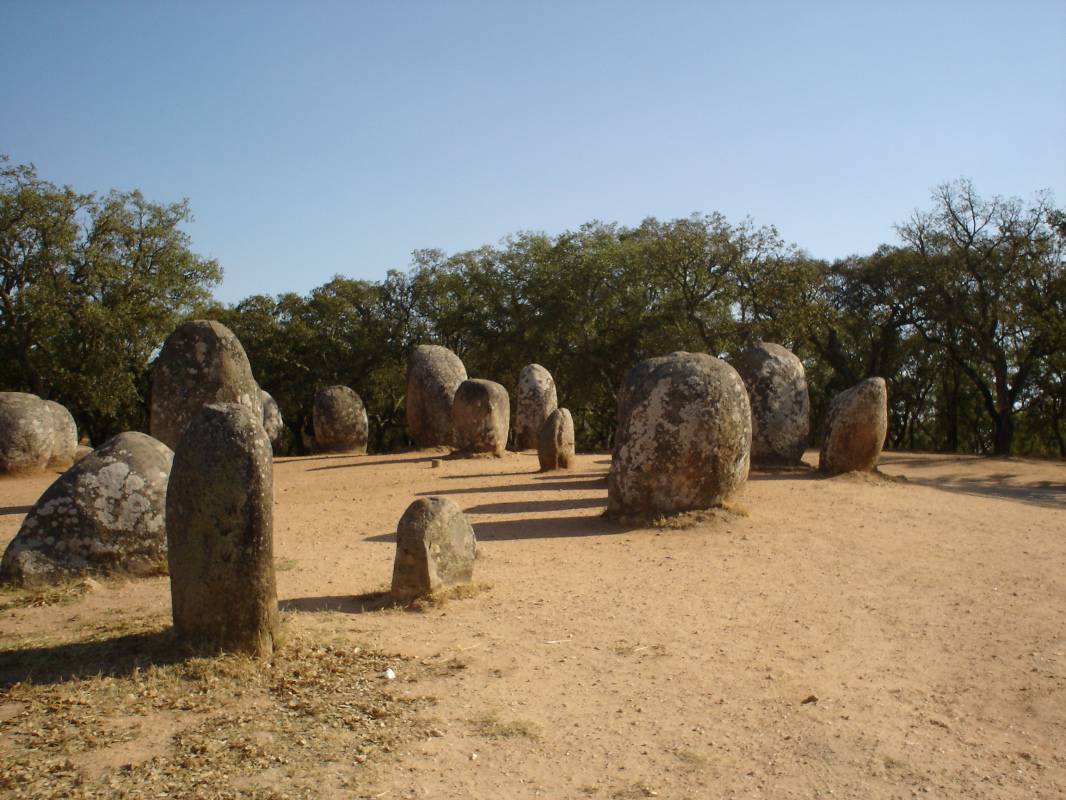The Cromlech of the Almendres: A Prehistoric Marvel in Portugal
The Cromlech of the Almendres, situated in the Alentejo region of Portugal, stands as a significant testament to the megalithic architecture that flourished in the Iberian Peninsula during the Neolithic period. This archaeological site, located near the village of Nossa Senhora de Guadalupe, Évora, is recognized as the largest group of structured menhirs in the Iberian Peninsula and ranks among the largest in Europe. The site encompasses a complex of cromlechs and menhir stones, integral to the “megalithic universe of Évora,” and shares similarities with other cromlechs in the Évora District, such as Portela Mogos and the Vale Maria do Meio Cromlech.
Get your dose of History via Email
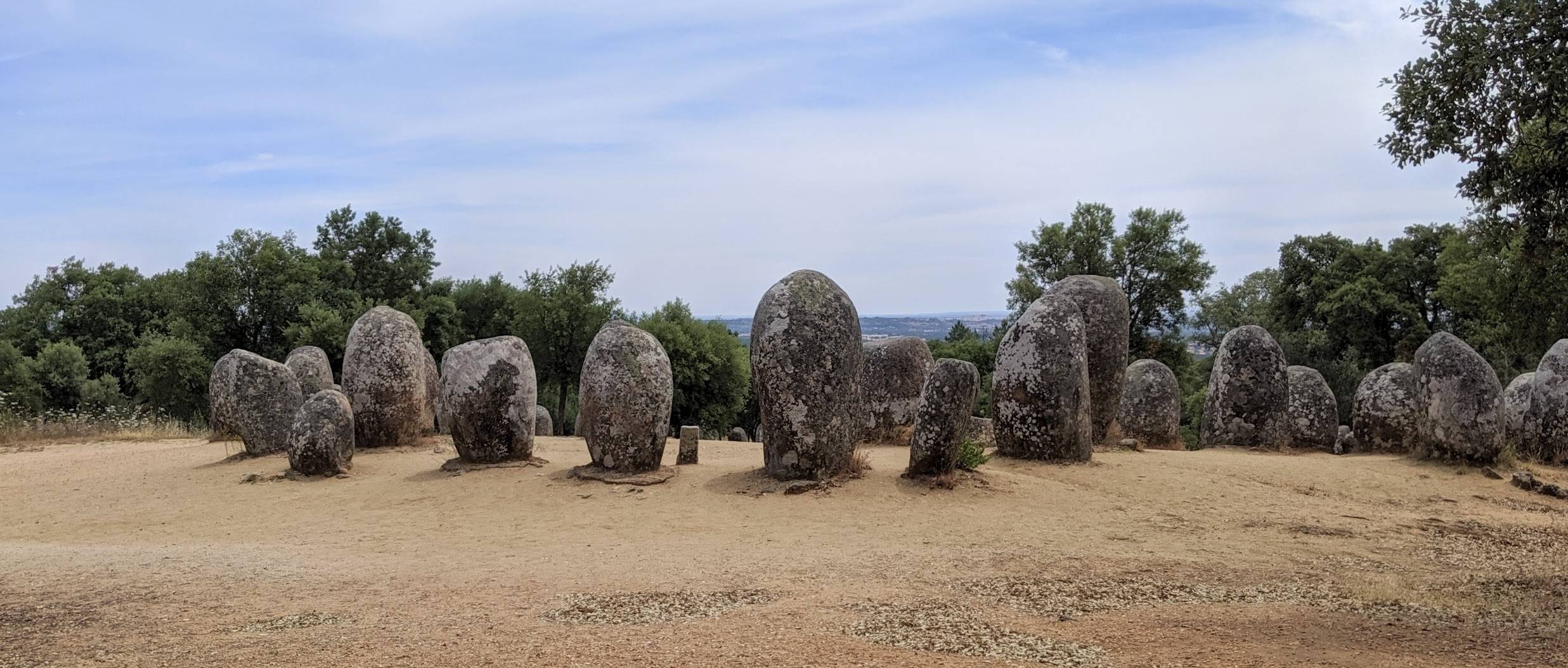
Historical Overview
The origins of the Almendres Cromlech trace back to the 6th millennium BC, marking a significant period of megalithic construction that spanned the Early to Late Neolithic periods. The site was rediscovered in 1966 by Henrique Leonor Pina during geological fieldwork. Subsequent excavations revealed a complex chronology, with distinct construction phases identified as Almendres I (6000 BC), Almendres II (5000 BC), and Almendres III (4000 BC). These phases reflect the evolution of the site from its initial establishment in the Early Neolithic to its later use in the Chalcolithic period. The purpose of the monument has been interpreted as either religious/ceremonial or as a primitive astronomical observatory.

Architectural Significance
The Cromlech of the Almendres is strategically located off the national roadway from Évora to Montemor-o-Novo. The site is characterized by approximately 95 granite monoliths arranged in a circular pattern, with the older monoliths forming concentric circles and the Middle Neolithic structures consisting of two irregular ellipses and large menhirs. The Late Neolithic phase saw modifications to the earlier structures, suggesting a shift towards social or religious rituals. Notably, ninety-two of the menhirs are organized into two groups, oriented to different directions associated with the Equinox, indicating a sophisticated understanding of astronomical phenomena.
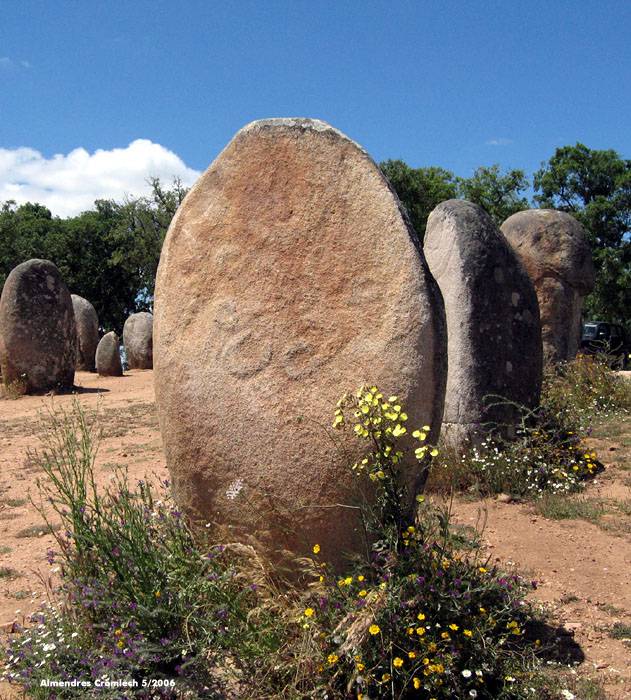
The restoration of many stones was undertaken by Mario Varela Gomes, based on meticulous research and the rediscovery of the original bases. The complex’s latitude is comparable to that of Stonehenge, suggesting a possible connection in the astronomical observations made at these sites. The cromlech occupies an area of 70 by 40 meters, with the monoliths showing signs of erosion but still retaining visible decorations, including lines, radials, and carved drawings. A few monoliths feature carved drawings, with one exhibiting a schematized anthropomorphic representation.
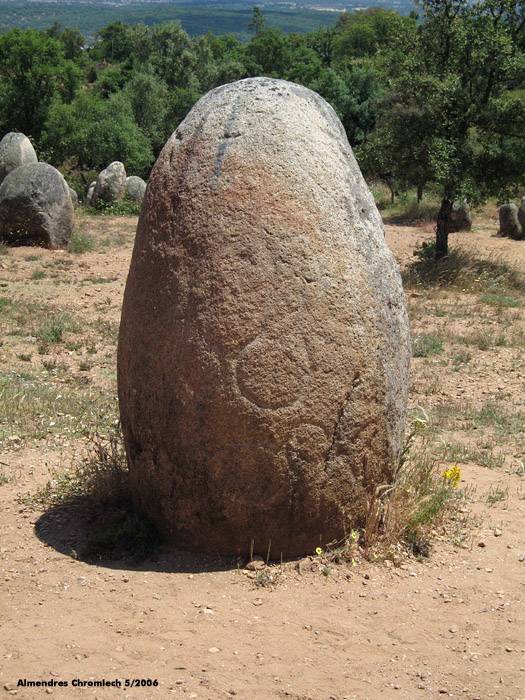
An isolated menhir, located near the residences and northeast of the main complex, aligns roughly with the sunrise on the Winter solstice, further supporting the site’s astronomical significance.

Conclusion
The Cromlech of the Almendres stands as a monumental achievement of Neolithic architecture and astronomical observation. Its complex construction phases, architectural organization, and the evident astronomical alignment of its monoliths underscore the advanced understanding of the cosmos by the prehistoric inhabitants of the region. This site not only provides invaluable insights into the religious and ceremonial practices of Neolithic societies but also highlights the sophistication of prehistoric astronomical knowledge. As such, the Cromlech of the Almendres remains a focal point of archaeological and historical interest, offering a window into the distant past of human civilization in the Iberian Peninsula.
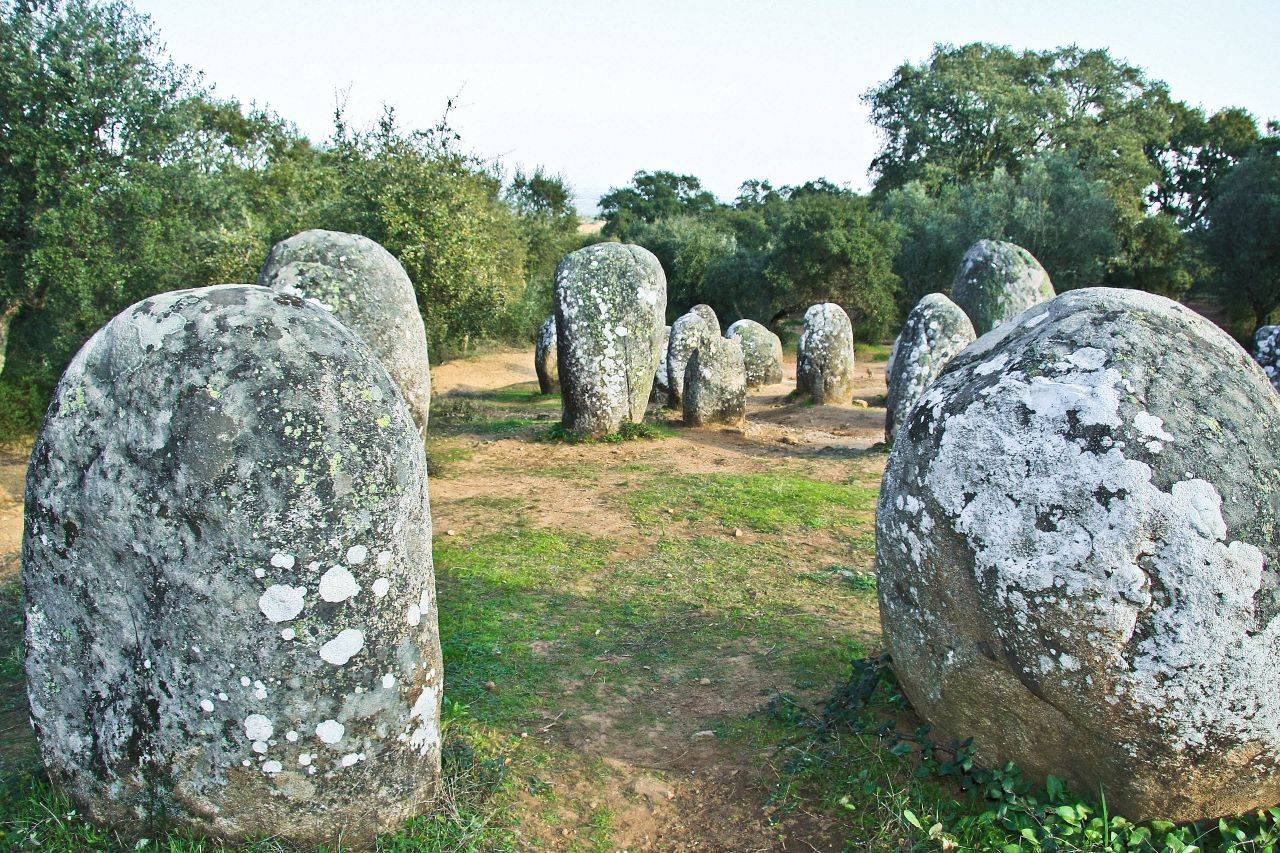
Sources:

